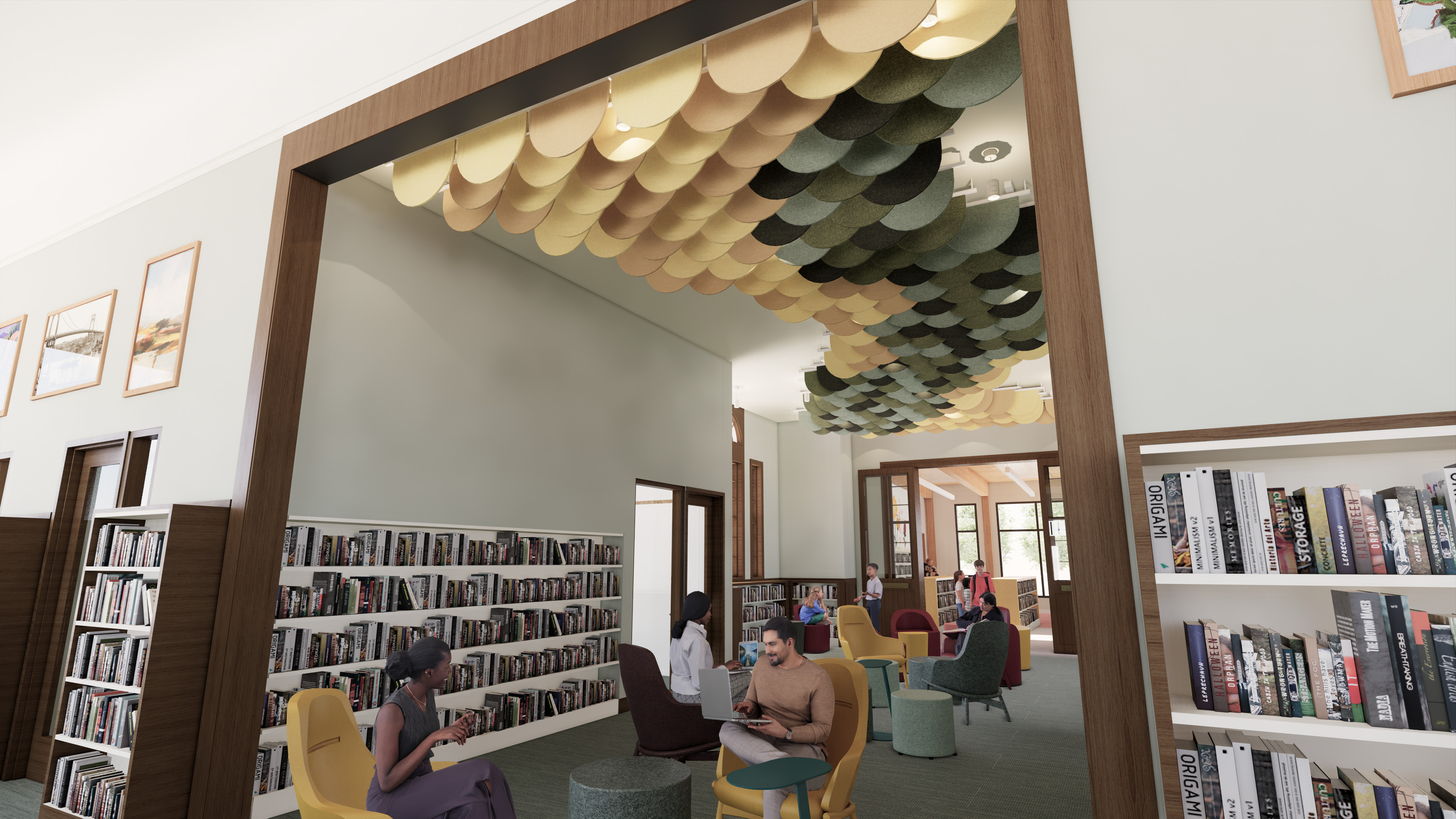Sophisticated Libraries on Lean Budgets
When the public votes in favor of a bond election for capital improvement of municipal or county facilities, it comes with a certain degree of both implicit and explicit trust that taxpayer funds are spent wisely and efficiently. Local values, like an emphasis on sustainability or a desire to create welcoming and community-centered spaces, can also be important for clients like Multnomah County, but these goals can be difficult to reconcile with budget-conscious civic construction.
Our teams at Howard S. Wright, a Balfour Beatty company (HSW), ensure clients don’t have to choose between them. We serve as a true partner in public stewardship, becoming involved in project planning as early as possible where our experts’ design, constructability and project sequencing solutions can have the greatest impact on project outcomes, resulting in public facilities like the recently completed Portland City Council Chambers renovations or the ongoing Multnomah County Library Chapter 3 projects that balance welcoming environments, sustainable materials and budget goals.
The Power of Early Involvement
The Multnomah County Library (MCL) Chapter 3 projects encompass three buildings, spread across the greater Portland metro area: significant expansions and renovations to both St. Johns Library and Belmont Library and the adaptive reuse of an existing building for the new Northwest Library. On all three, HSW’s early involvement in a collaborative Construction Manager/General Contractor (CM/GC) contracting method has been essential to identifying the best and most cost-effective material and construction solutions, from key trade partners to envelope-pushing sustainability.
 The earlier our team can be involved in the projects’ design phases, the earlier we can engage and retain our industry-leading trade partners for the most impactful portions of each project’s budget, including mechanical, electrical and plumbing (MEP) systems, fire mitigation, elevators and even mass timber.
The earlier our team can be involved in the projects’ design phases, the earlier we can engage and retain our industry-leading trade partners for the most impactful portions of each project’s budget, including mechanical, electrical and plumbing (MEP) systems, fire mitigation, elevators and even mass timber.
“Bringing in these key trade partners as early as possible truly helped our team and our design partners make smart systems decisions,” says Megan Cook-Eichelberger, senior project manager over all three libraries. “Smart design and construction decisions translate directly to maximized value and savings for our client.”
Construction trade partners possess specialized knowledge that is essential in ensuring the practicality and efficiency of a project. Megan emphasizes that trade partners’ designers’ expertise helps align breathtaking design concepts with the realities of supply chain and material quality, thereby optimizing resources and reducing expenses.
HSW’s Virtual Design and Construction (VDC) teammates like VDC Director Don Josephson also play an invaluable role in this process, conducting extensive Building Information Modeling (BIM) coordination and constructability analysis aimed at threading together two-dimensional plans, three-dimensional models and the real-world cost implications of both.
“Our early design involvement also helped prevent budget surprises later,” Megan adds, citing validation of electrical service expansion on the library renovations as prime examples. “Expansion and renovation work involving electrical systems, if not properly planned for, can drain a project budget late in the schedule. Through design reviews, our trade partners’ input and BIM coordination, we know exactly what to expect and when.”
Warm and Welcoming
While no amount of early involvement can change bottom-line material prices, early involvement is key to achieving maximal value. Every dollar and hour saved from system design validation or unnecessary infrastructural upgrades is a resource that can be channeled directly into the libraries’ end-user experiences. On the MCL projects, that will mean Class-A finishes like mass timber beams, metal panel walls, and glass sliding doors.
Mass timber also presents an opportunity to build a more sustainable end-product as it relies on recycled wood pulp or laminate rather than hardwood timber. The user experience still feels like an environment supported by hardwood beams overhead while also accomplishing HSW’s and the County’s goals for more environmentally-conscious construction methods.
“Our HSW team understands that Multnomah County’s focus is on developing truly great spaces and libraries that encourage people to not just visit, but to stay,” Megan says. “By channeling savings elsewhere into this mission, we empower the County to achieve both luxury finishes and budget-consciousness.” 
Many of these elements, especially mass timber and glass walls and doors, connect the space to the outdoors and evoke the lush landscape of the Pacific Northwest. The cost savings and value engineering can be described in terms of dollars returned or reallocated, but that’s not the end of the story. The intangible benefits, a space that feels rooted in both nature and the community, will continue to pay dividends for decades as the libraries serve as community anchors.
“Our three libraries have a similar ‘feel’ to them, but they also very much respect the unique characters of the neighborhoods they are in and will serve,” Megan adds. “Beyond just responsible public stewardship, Multnomah County’s mission – and HSW’s – is to create spaces people want to come to for community and the vital resources within.”
Partners in Public Trust
When building vital public facilities, from health services administration centers to city halls to county library systems, HSW understands that our civic clients take their public investiture seriously.
Our teams proudly take ownership of that responsibility. We come alongside the mission of public stewardship with industry-leading lean practices, tech-enabled construction solutions, and a client-first approach to collaboration that ensures accelerated schedules, reliable budgets and successful projects that better our communities, while still maximizing the fit and finish quality that will encourage our communities to use these resources.